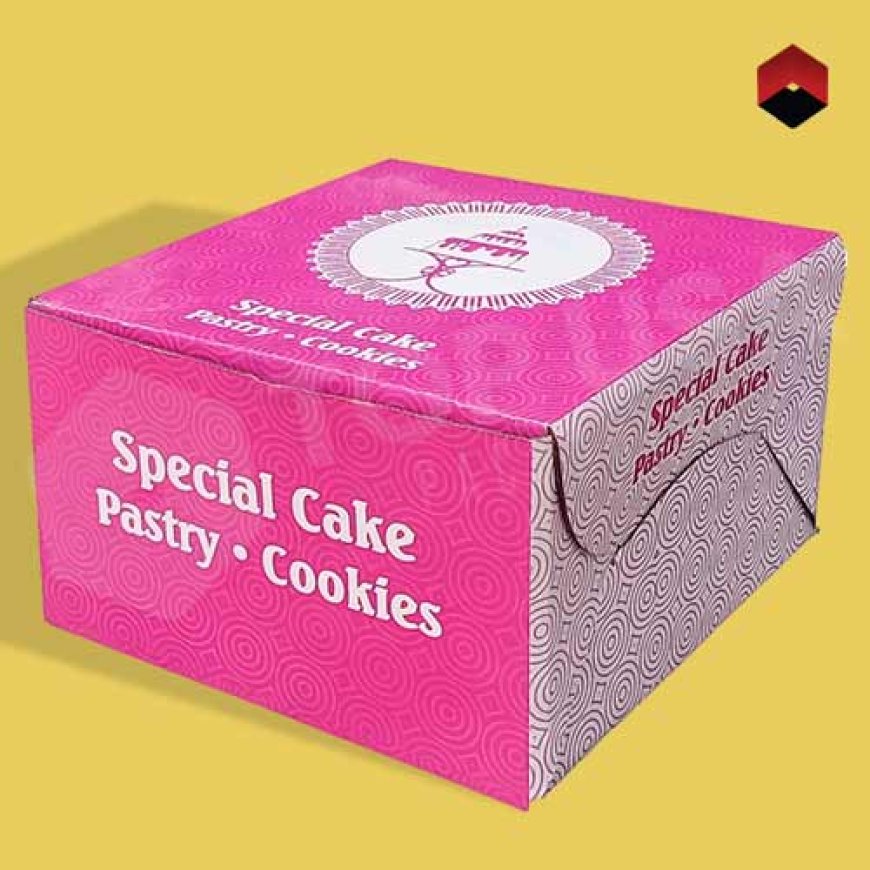The Evolution of Cake Boxes: From Practicality to Presentation
Cake boxes play a vital role in the world of baking, serving as both a practical necessity and a creative canvas for presentation.

In the realm of baking, there exists a symbiotic relationship between taste and presentation. A beautifully crafted cake not only tantalizes the taste buds but also captivates the eyes. However, the journey from oven to table is not without its challenges, and one of the unsung heroes in this process is the humble cake box. Often overlooked, cake boxes play a crucial role in preserving the integrity of these delectable treats while also serving as a canvas for creativity. In this article, we delve into the evolution of cake boxes, exploring their history, design innovations, environmental impact, and their significance in the world of baking.
A Brief History of Cake Boxes
The origins of cake boxes can be traced back to the late 19th century when the industrial revolution transformed the landscape of food production and distribution. As bakeries began to proliferate, the need for efficient packaging became apparent. Initially, cakes were wrapped in parchment paper or cloth, but these methods proved inadequate for transporting delicate confections over long distances.
The advent of cardboard revolutionized the packaging industry, offering a lightweight yet sturdy alternative to traditional materials. In the early 20th century, cardboard cake boxes emerged as a popular choice among bakers, providing a convenient solution for packaging and transporting cakes.
Design Innovations in Cake Box Packaging
Over the years, cake box design has undergone significant innovations to meet the evolving needs of bakers and consumers alike. Early cake boxes were simple in design, consisting of a basic rectangular shape with minimal embellishments. However, as consumer preferences shifted towards more elaborate presentation, cake box designs became more intricate.
Today, cake boxes come in a variety of shapes, sizes, and styles, ranging from classic square boxes to elegant round containers. They may feature decorative elements such as embossed patterns, window cutouts, and printed designs to enhance their visual appeal. Some cake boxes even come equipped with handles or inserts for added convenience.
Environmental Considerations
While cake boxes offer practical benefits in terms of packaging and presentation, they also raise concerns about their environmental impact. The widespread use of cardboard and paperboard in packaging contributes to deforestation and generates significant amounts of waste. Moreover, the production and disposal of cake boxes contribute to carbon emissions and pollution.
In recent years, there has been a growing awareness of the need for sustainable packaging solutions in the food industry. Bakers and manufacturers are increasingly turning to eco-friendly alternatives such as biodegradable materials, recycled cardboard, and compostable packaging. These efforts aim to reduce the environmental footprint of cake box packaging while still ensuring the freshness and quality of baked goods.
The Role of Cake Boxes in Branding and Marketing
In addition to their practical function, cake boxes also serve as a powerful tool for branding and marketing. A well-designed cake box can convey a bakery's brand identity and create a lasting impression on customers. From custom logos and colors to creative packaging designs, cake boxes offer endless opportunities for brand differentiation and promotion.
Many bakeries use custom-printed cake boxes as a way to showcase their unique style and attract customers. By investing in eye-catching packaging, bakeries can elevate the perceived value of their products and stand out in a crowded marketplace. Moreover, branded cake boxes serve as a form of free advertising, as customers often share photos of their cakes on social media platforms, further amplifying the bakery's reach and visibility.
The Future of Cake Box Packaging
Looking ahead, the future of cake box packaging is likely to be shaped by advancements in technology, sustainability, and consumer preferences. As the demand for eco-friendly packaging continues to grow, we can expect to see more innovative solutions emerge, such as edible packaging made from natural ingredients or reusable containers designed to minimize waste.
Furthermore, the rise of e-commerce and online ordering has opened up new possibilities for cake box packaging. Bakers are exploring ways to optimize packaging for shipping and delivery, ensuring that cakes arrive safely and intact at their destination. This may involve the use of protective inserts, tamper-evident seals, and customizable packaging options to meet the needs of online customers. If you want to know more information about mailer boxes visit TopUSAPackaging.
Conclusion
In conclusion, cake boxes play a vital role in the world of baking, serving as both a practical necessity and a creative canvas for presentation. From their humble beginnings in the 19th century to the present day, cake box packaging has evolved to meet the changing needs of bakers and consumers. While challenges such as environmental sustainability remain, the future of cake box packaging holds promise for innovation and progress. As we continue to explore new materials, designs, and technologies, cake boxes will remain an essential element in the art of baking and a testament to the ingenuity of human creativity.

 Ameliajordan789
Ameliajordan789 





